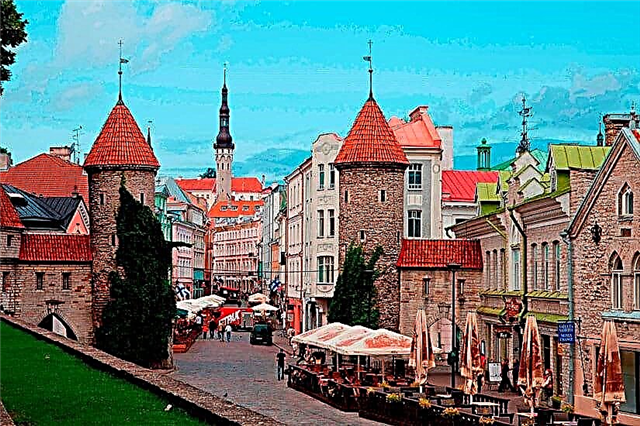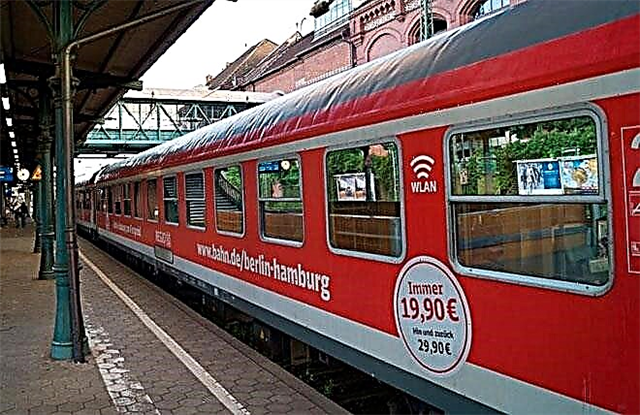Berlin and Hamburg are large cities in which business activity is in full swing and there is something to see for tourists. The flow of passengers traveling from the capital of Germany to the country's main shipbuilding center does not dry up around the clock. We will tell you how to get from Berlin to Hamburg quickly, comfortably and without significant costs.

Possible ways
The distance from Berlin to Hamburg is 288 kilometers. On the way, you will cross Brandenburg, Western Pomerania and Schleswig-Holstein.
If speed is important to you, you can go by plane or the Intercity express train. If you are planning to turn your trip into an exciting journey and admire the picturesque landscapes of the country, choose a bus or a car.
German transport services are renowned for their punctuality and the timetables are strictly adhered to, so you can always plan your trip in advance.
Travel by train
The train route from Berlin to Hamburg is scenic. During the trip, you can admire the landscapes and architectural features of the different regions of the federation.
Trains to Hamburg leave from Berlin Central Station (Berlin Hbf), which is located at Europaplatz, 1. From 5:27 am to 11:00 pm, high-speed express trains run every half hour or hour. Travel time is from 1 hour 42 minutes to 2 hours 9 minutes.
Tickets can be bought at ticket offices, railway terminals, on the official website of the German Railways or on the websites of transport agencies. The form for ordering tickets on websites and in terminals is not only in German, but also in English.
The price of tickets depends on the speed of the train, the class of the carriage and the time of purchase. Booking in advance will give you the opportunity to save on travel costs.
This is especially true if you are traveling in a large company. Tickets purchased online must be presented in a printed form. The accuracy of train departures is observed up to a minute, so it is better not to be late for the station.

A trip in a second class carriage will cost you from 30 €, a trip in first class - from 78 €. For children 6-14 years old, the train will be 50% of the fare for an adult. Children under 6 years old can ride for free, but only when accompanied by an adult. When boarding a train, you can determine the class of the carriage by the numbers "1" and "2" on the doors.
If you want to see the sights in cities that are located along the route, you can choose the itinerary with transfers. This will not significantly increase the cost of the trip.
Bus ride
The bus journey from Berlin to Hamburg takes about 3 hours 10 minutes. The spacious soft chairs will make you feel comfortable throughout your trip. The salons have Wi-Fi, electrical outlets and a toilet.
Berlin-Hamburg flights depart from the city's central bus station (ZOB am Funkturm) from 0.50 to 21.50 every hour. The bus station can be reached from any part of the German capital by metro (to the Kaiserdamm station) or by city buses on the M49, 139 and 218 lines.

The most convenient way to buy a ticket for a Berlin-Hamburg bus is online on the carrier's website https://flixbus.ru/. The cost ranges from 8 to 25 euros, depending on the time of departure.
Flight by plane
For the Berlin-Hamburg route, flying by plane is perhaps the most inconvenient option for a tourist. There are no direct flights from Berlin to Hamburg, flights are made with transfers at the airports of Dusseldorf or Frankfurt am Main. As a result, the total travel time will be longer than by train or car, and tickets will cost significantly more - from 120 to 200 €.
Car walk
Personal vehicles allow you to make stops in any places that caught your attention, get acquainted with the peculiarities of different regions of the country, sightseeing, visiting interesting natural areas and culinary establishments. If you are planning to arrange an exciting trip for a family or a group of friends, and you do not care how many kilometers the path will increase, the most convenient option may be to travel by car.
By own car
The route from Berlin to Hamburg starts on the B114. From there, you turn onto the A10 motorway, and then onto the A24 motorway, a convenient highway with several lanes and signs to help you navigate along the way. The total travel time by car will take about three hours.
Germany has strict safety regulations that can lead to fines. You must wear a seat belt in your car, even if you are sitting in the back.
Children under 12 years old can only sit in the rear seats. Babies under 3 years old are allowed to be transported only in a child seat.
Drivers must not use their mobile phone while driving. In cities, the speed limit is 50 km / h, on the highway (if it is not an autobahn and there are no additional signs) you cannot go faster than 100 km / h.
There is no speed limit on the Autobahn. Traveling on the autobahns in Germany is free.
On an independent trip from Berlin to Hamburg by car, you will spend about 25 liters of gasoline costing 1.2-1.4 €, that is, about 35 €. For vehicles with other types of engines, transport costs can increase up to 50 €.
There are roadside cafes and eateries for rest and refreshment. A light budget lunch or a cheeseburger with chips and coffee will cost € 7-15.
On a rented car
You can travel around Germany not only with your own car, but also with a rented car. Rental locations are easy to find online on the Rentalcars website. Booking in advance will allow you to choose the vehicle that suits your needs and pay less for the rental.
International driving licenses issued in other countries are valid in Germany. But only drivers who are at least 21 years old are allowed to drive a rented car.
When choosing a car, pay attention to its technical features. Most of the cars that are rented have a manual transmission. If the driver is accustomed to automatic shifting, this can create significant inconvenience for him. Therefore, when renting, it is worth discussing this point in advance and choosing a car that will be familiar and comfortable to drive.

A GPS navigator can usually be rented along with the car. This device will help you navigate the way and will be useful if you are in the country for the first time.
The cost of renting a car ranges from 37–90 € per day. This amount includes insurance against theft and damage. There must be an amount on your bank card that is sufficient to pay the security deposit for the car.
As a travel companion
In Germany, services are widespread that help to select fellow travelers on a particular route. You can gather a group of up to 5 people and rent a car together, or find a company that goes to Hamburg and takes you as a passenger.
On the Blablacar service, a travel companion from Berlin to Hamburg can be invited for 13-15 €. Collective car rental will cost from 30 € per day, including gasoline costs.
| Type of transport | Travel time | Cost, € |
|---|---|---|
| Train | 1 h 42 min-2 h 09 min | 30-78 |
| Bus | 3 h 20 min | 8-25 |
| Airplane | from 6 h | 120-200 |
| Personal car | 2.5-3 h | 35-50 (gasoline) |
| Rented car | 2.5 -3 h | 37-90 per day + gasoline |
| Passing car | 2.5-3 h | 13-15 |
Conclusion
If the question of cost is important to you, then finding a passing car or traveling by bus will be the cheapest and quickest options. To get to Hamburg in the shortest possible time, take the express train.A car (personal or rented) is a good choice for a tour of the country if you are not in too much of a hurry and do not have to limit your expenses.
Hamburg is a city worth seeing, and it doesn't take much time or money. If you haven't been there yet - don't delay!











